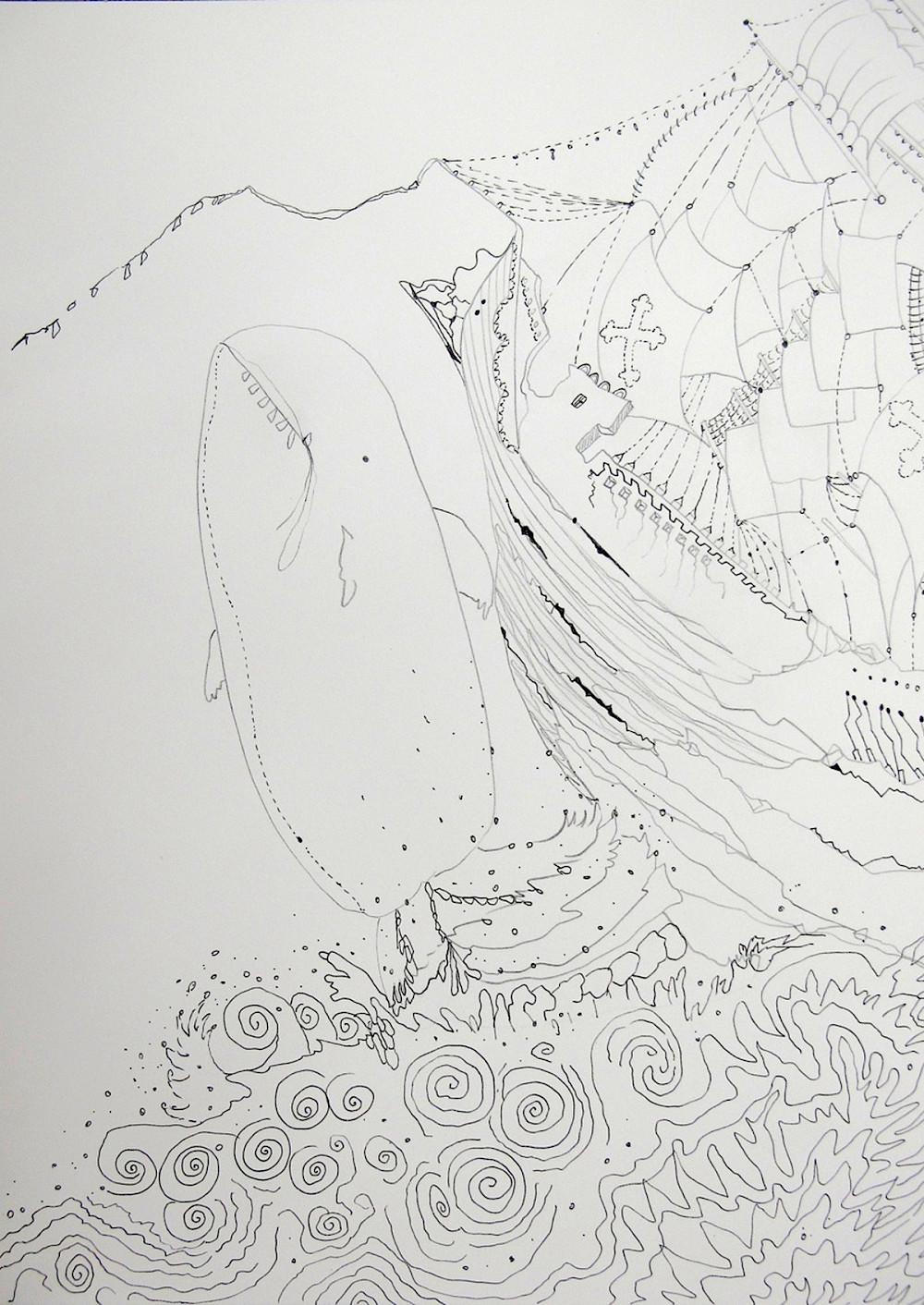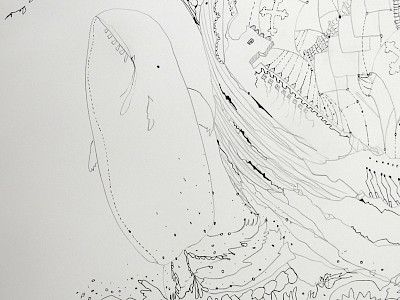12.05, 15.05, 21.05, 28.05.2011
Wael Shawky Alexandria
Cabaret Crusades: The Horror Show File
cinema
Arabic → EN | ⧖ 33min | Cinema Arenberg: 12/05 – 21:30 | Cinema Rits: 15/05, 15:00 + 21, 28/05 – 19:00
Egyptian artist Wael Shawky has gained considerable international recognition for his installations, videos, photographs and performances exploring religion, politics and the effects of cultural globalisation. Cabaret Crusades is a cycle of films in which he reexamines the history of the crusades by having the events re-enacted by puppets unleashed on cardboard battlefields. Inspired by Amin Maalouf’s book The Crusades Through Arab Eyes, Shawky questions the socioeconomic motivations behind these “holy wars” which left an indelible impression on the Arab world and its relationship with the West. Christians, Muslims, kings, caliphs, popes, martyrs and saints: all of them are puppets, but no one knows who is pulling the strings… A short filmed drama with a surreal atmosphere combining drama and lyricism, Cabaret Crusades: The Horror Show File invites us to navigate through the territories of truth, myth and cliché. It is a history lesson which is as sensitive as it is penetrating.
Cabaret Crusades: The Horror Show File
The film is a translation of causes and effects of the religiously sanctioned military campaigns in the form of images based on a reconstruction of events seen through the eyes of those who had to confront the invasion. Shawky provides a precise description of the places in Middle East and Europe which formed the backdrop for the early Crusades. To bring these episodes alive, he uses highly expressive 200-year-old marionettes from the Lupi collection in Turin. They are moved by clearly visible strings and don the costumes by the characters who were present in the Christian armies of Europe and in the Muslim armies during the conflicts. Though the subject is based on historic documents and facts, what emerges is a surreal and mythical atmosphere which blends drama and cynicism, telling a story of remote events that could hardly be more topical today.
The main source of inspiration for this work is The Crusades Through Arab Eyes by Amin Maalouf, written in 1986, and thus long before today’s recrudescence of hatred.
The book by Maalouf, a Lebanese who lives in France, re-examines the history of the Crusades by going back to Arab historians and their writings, most of which have never been taken into consideration in the West, though he does also turn to some of the most acknowledged Western sources and studies. The historical picture that emerges is at once powerful but level-headed, political but unbiased. The essay gives some insight into the historical cruelties perpetrated in the name of a vague feeling of religious humiliation, but more objectively one that was carried out for complex socioeconomic reasons, the most important of which was a reaction against the misery and desperation caused by the plague which struck the lands of the Byzantine Empire between 541 and 543 AC.
Shawky’s film starts with the scene of the plague, one of the main reasons of the fall of urban civilisation in the territories of Constantinople. These lands were still under the control of Constantinople and had already been considerably weakened by war and economic decline. Such a tragic view of human misery subsequently leads on to massacres, battles, betrayals, and sieges that was to be the story of the Crusades.
Accustomed as we are to seeing the Crusades as a glorious race to free Jerusalem in the name of God, we may well be astonished by the events that actually took place. It was not the liberation of the Holy Sepulchre, but the conquest of the lands that had formerly been part of the Roman Empire, on which for centuries the Catholic Church attempted to exert its control. This was to be the conquest of peoples and economic resources for a Europe that was barely managing to survive.
The strings that are used to move people in history have always been a visible form of manipulation. In this context, the string puppets proved to be the ideal means for the Egyptian artist to narrate the story of some of the most terrible years in human history. Calm and collected reflections on these matters might help us meditate on past errors, which crop up again and again in a never-ending cycle.
Judith Wielander
Interview with Wael Shawky (excerpt from the Theater der Welt workbook)
As far as the debate on cultural hybridity is concerned, where do you stand with your work?
I’m primarily interested in the transition processes that play a key role in the discussion on cultural differences. I’m getting closer to these real or illusory debates and moving towards a playful, less dramatic critique of social systems of inclusion and the transformation of new ideas. I’d like to explain how the ‘wet culture’ of a society shaped by agriculture sees a ‘dry culture’ of nomadic bedouins and in urban terms too. In a similar way to how we in the academic and artistic discourse identify as central themes the suppression of equal rights, shrinking cities and global villages in favour of a policy of aesthetics extolling ‘difference’ and overemphasising diversity.
How important is location-specific research when you’re developing your material?
Location plays an important role in my projects, particularly in relation to topics relevant to hybrid social systems. I mostly present documents of fictitious events involving particular social categories and structures. Space that is fictional as a rule has a reference to an historical event.
What were your main concerns with regard to form and content?
The mechanics of the age of doubt let us use social concepts and cultural heritage more as media for producing the poetic image than as a final, consumable product. So for both the manufacturer and the consumer, it concerns the transmission and transformation of complex concepts into assimilable products located in the schematic of late capitalist society’s daily ability to consume. Transformation does not celebrate specific ideology here either, but simulates the prevailing system in which ideas become products and culture becomes a medium. The objective is not the manufacture of a definitive, finished product, by this I mean just stereotypical images ultimately, but the attempt to negotiate culture as a dynamic unit that does not simply let itself be reduced to transactions. This contradiction determines the aesthetics here. [...] In their nomadic nature the bedouin community becomes a metaphor for globalisation to a certain extent: borders and spaces are penetrated, there is a parallel between the nomads’ tribal nature and the idea developed by shareholders of common interests as a driving force of globalisation.
Which topics, which cultural and historical events and positions influence your work?
I spent over ten years as a child travelling between Mecca in Saudi Arabia and Alexandria in Egypt. In those days Mecca was starting to modernise and there were clear conflicts between bedouin nomadism and the modern capitalist age. This was when I started to do pictures. The processes of social transition to the modern age of autarkic communities are an important aspect in my work to this day. Living as an Egyptian in Mecca also stands for a connection to a particular phase in the history of modern Egypt. It encompasses the period of economic change which was part of Sadat’s new agenda. I can’t imagine myself outside society, either as a person or an artist occupied with immediate social change. I am an integral part of it. My work is a medium through which I communicate in and through society. In this respect I actually compare my role with that of a translator and this is reflected in all my productions.
Written & directed by
Wael Shawky
Producer/manager
Judith Wielander
Costume design
Mara De Matteis
Photography & camera
Fabrizio La Palombara
Editing & color correction
Claudio Cavallari
Set design
Wael Shawky/Paola Sommaruga
Marionettes
Ebtihal Mostafa/ Eitesam Mostafa
Presentation
Kunstenfestivaldesarts, Rits, Écran d’Art (Argos, Beursschouwburg & Cinema Arenberg in collaboration with La Cambre Academy)
Production
Kunstenfestivaldesarts
Coproduction
Istanbul Biennial


